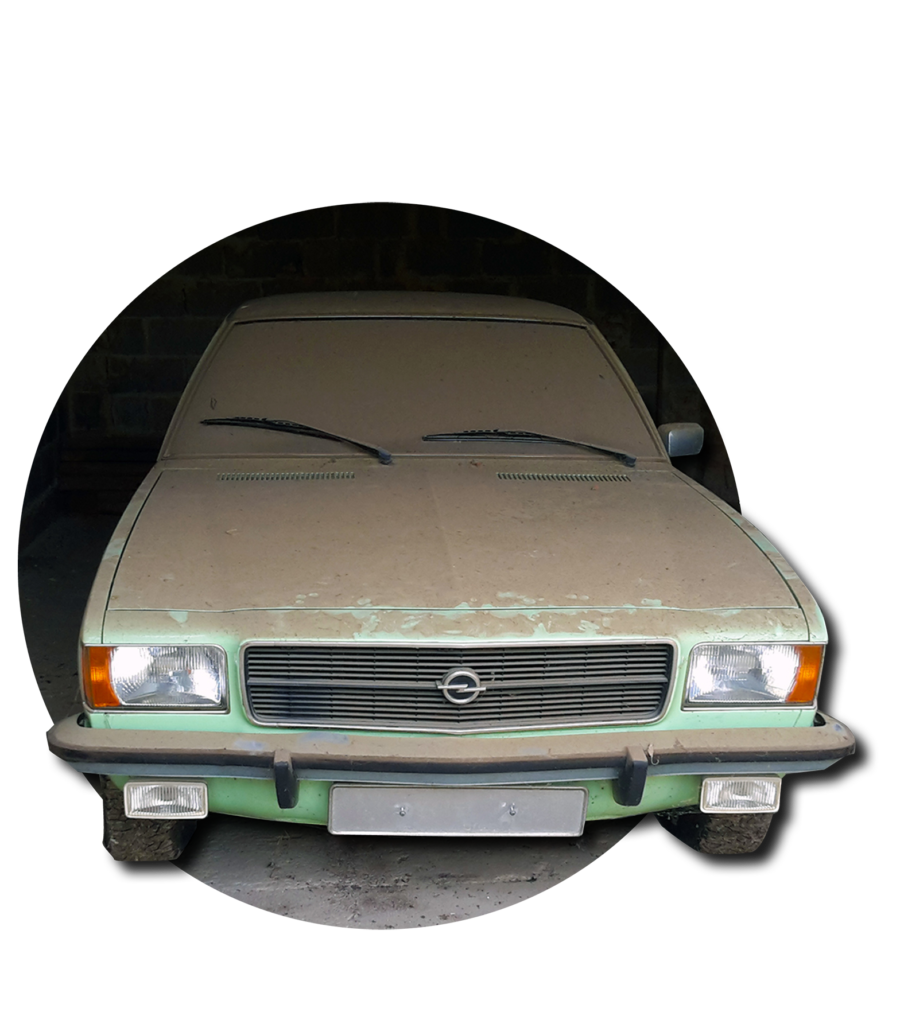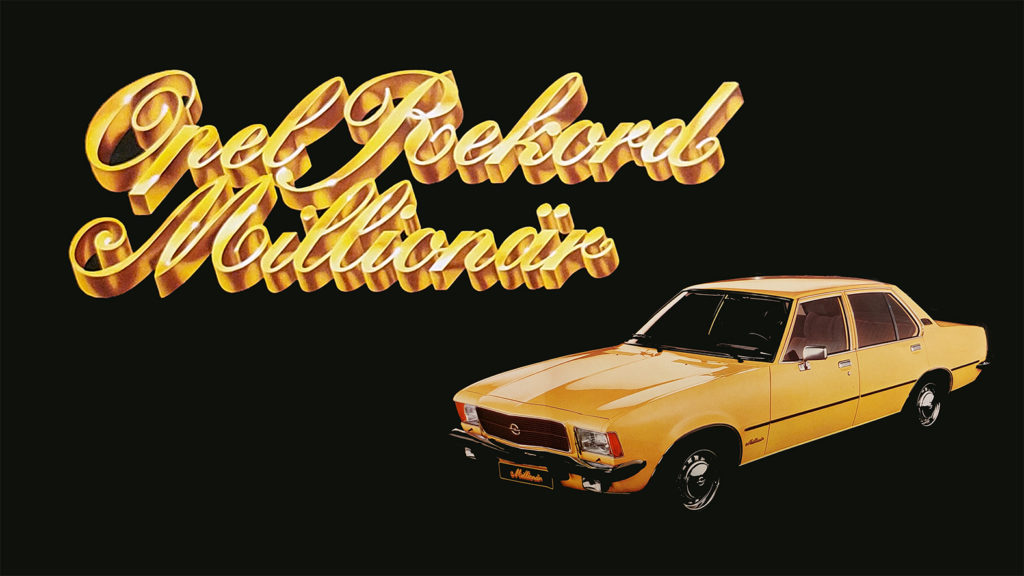Let’s be honest: when was the last time you saw a Rekord D on the road? It must have been a while ago. But they still exist. You just have to keep an eye out for them. And that’s what Andreas Vollmer did. He is known in the scene as a collector of beautiful vintage Opel cars, specialising in the Kadett D. He can call a total of six Opel vehicles from this era his own. And he is very well connected when it comes to Rüsselsheim models from these days.

One day Andreas Vollmer got a phone call. From a friend from the Ford scene, of all people, who told him that an acquaintance had an Opel Rekord D in her barn. And it had been there for a good 30 years. With just 60,000 kilometres on the clock. This kind of story is familiar from earlier days: a car was parked in a barn and forgotten for decades. Until it was rediscovered by a lucky collector. But this doesn’t happen anymore nowadays. The barns were all cleared out long ago. Really, all of them?
A dusty treasure
Of course Andreas Vollmer drove to the location in question in central Hesse. Once there, he found a very dusty classic car. A picture that might have put off untrained eyes at first. But not the afficionado’s. The dust reveals that the barn is dry. Good conditions for a car that has spent three decades in it.


The rare ‘barn find’ still happens.
In 1971, the German TV programme “Die Sendung mit der Maus” was broadcast for the first time. The TV sets mostly still had colourless tubes and of course no remote control. With three television channels to choose from, neither “zapping” nor the word itself had been invented. And in that year, in December, the first Opel Rekord II saw the light of day. That was what it was called at first, not Rekord D. It was feared that the “D” might be misinterpreted as a diesel.
First Opel diesel passenger car
In fact, the diesel engine first appeared on the market one year later in the Rekord. Thus, the model is the first Opel diesel passenger car to be built in series. Three months earlier in June, the turbocharged swirl-chamber engine made its first appearance – in an aerodynamically optimised diesel GT that set 18 international records and two world records at the Dudenhofen Test Centre. Who would have thought at the time how popular this type of drive – which had been used especially in trucks until then – would become?

Ultimately 1,128,196 Rekord D cars rolled off the production line in Rüsselsheim.
As with the predecessor, there was a choice of three body variants: the classic notchback limousine with two or four doors, a caravan version with three or five doors. For commercial use – and in the best tradition of the legendary “fast delivery van” of the 1950s and 1960s – Opel also offered the Rekord as a delivery van (a three-door estate car without side windows in the rear). Last but not least, a coupé rounded off the range. However, this time with a B-pillar, the omission of which still distinguished the C-Rekord.
A real bestseller
When the last Rekord generation was launched in September 1977, 1,128,196 Rekord D and 140,827 Commodore B models had rolled off the production line in Rüsselsheim. A great success for the brand from Hesse. And proof enough that “the market needs a car like the Rekord”, as an Opel press release aptly put it at the time of the model’s launch.



“Remember: Millionaires don’t come along every day.”
– from the 1976 “Millionaire” sales prospectus –
Rekord turns out to be a millionaire
As it soon became clear, Andreas Vollmer’s barn find was the exclusive special „Millionaire“ model. This was introduced when a golden Rekord D limousine rolled off the production line in September 1976 as the one-millionth model in the line. In addition to the Berlina equipment, Opel gave the „Millionaire“, among other things, an electromagnetic release of the boot lid – at the push of a button from the driver’s seat. There were also lots of additional instruments such as a rev counter, voltmeter and oil pressure gauge. This meant that the Rekord driver was better equipped than many a driver of a sports car at the time. In any case, it was clear to Andreas Vollmer that this special Rekord had to quickly be brought back to life.


A visual inspection revealed: no serious rust spots. Very good. Even the engine turned, if only with a ratchet on the crankshaft pulley for the time being to be on the safe side. Only the thermostat looked a bit worse for wear and the water pump had also seen its best days. Aside from the V-belt, which should be replaced after such a long time, these were just minor details. With the help of colleagues from the Alt Opel Interessengemeinschaft, Andreas Vollmer quickly restored the car. Since September of this year, the vehicle has also been approved again in the form of a full inspection. After more than 30 years in the barn, the Millionaire is once again allowed out on public roads.
After 30 years in the barn, it is allowed back on the road.
In accordance with the original purpose of the Rekord D, Andreas Vollmer likes to drive it to work and to the supermarket. The lime-green model from Rüsselsheim is still suitable for daily drives today. But he especially likes to take the classic out for a spin in nice weather at the weekend. Maybe we’ll see it on the road soon. Because, as we said, they still exist. You just have to keep an eye out for them.

December 2021
